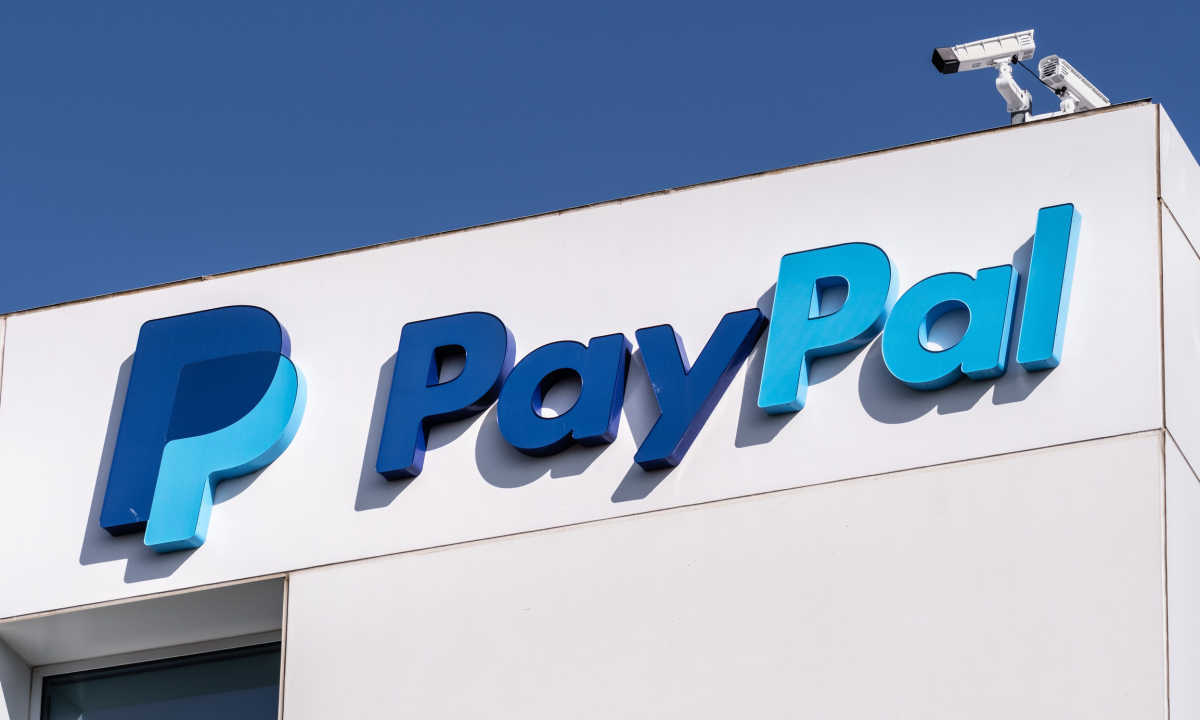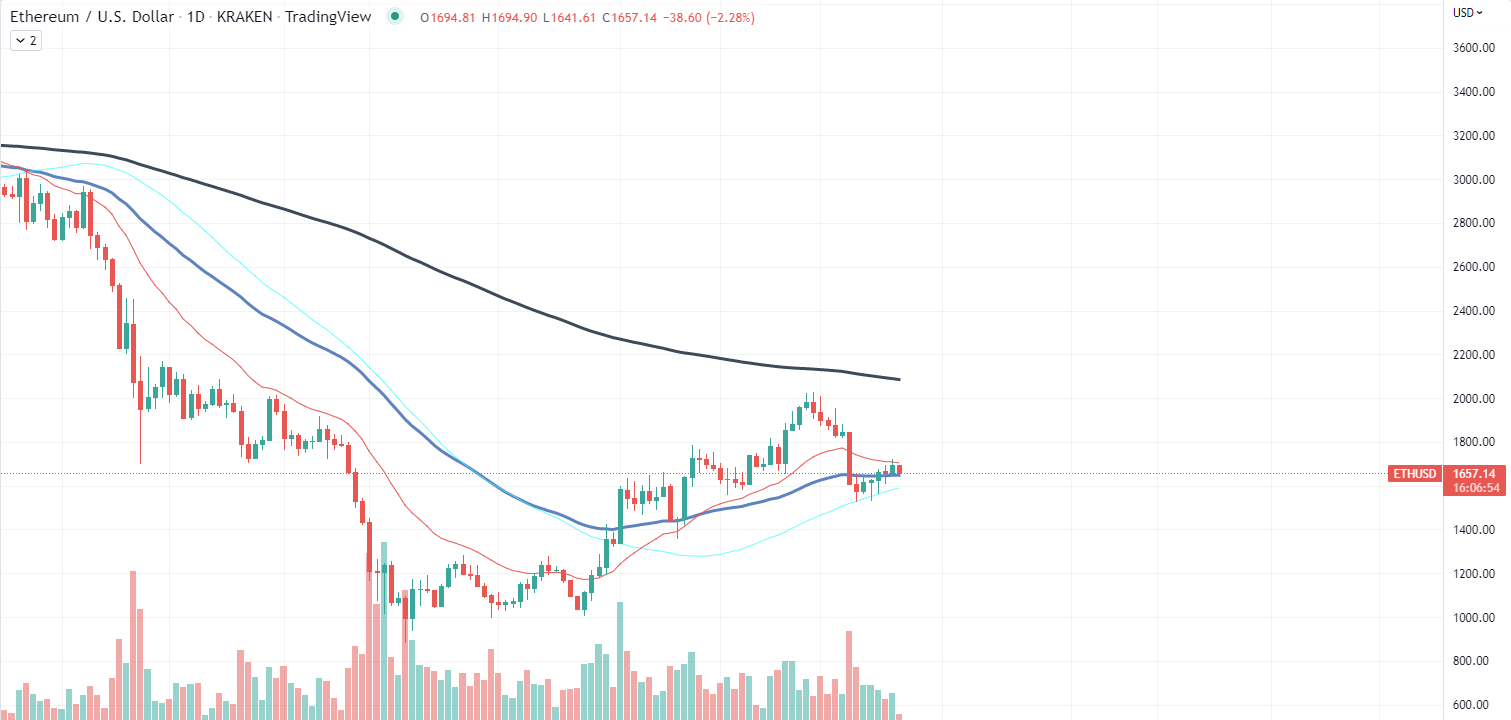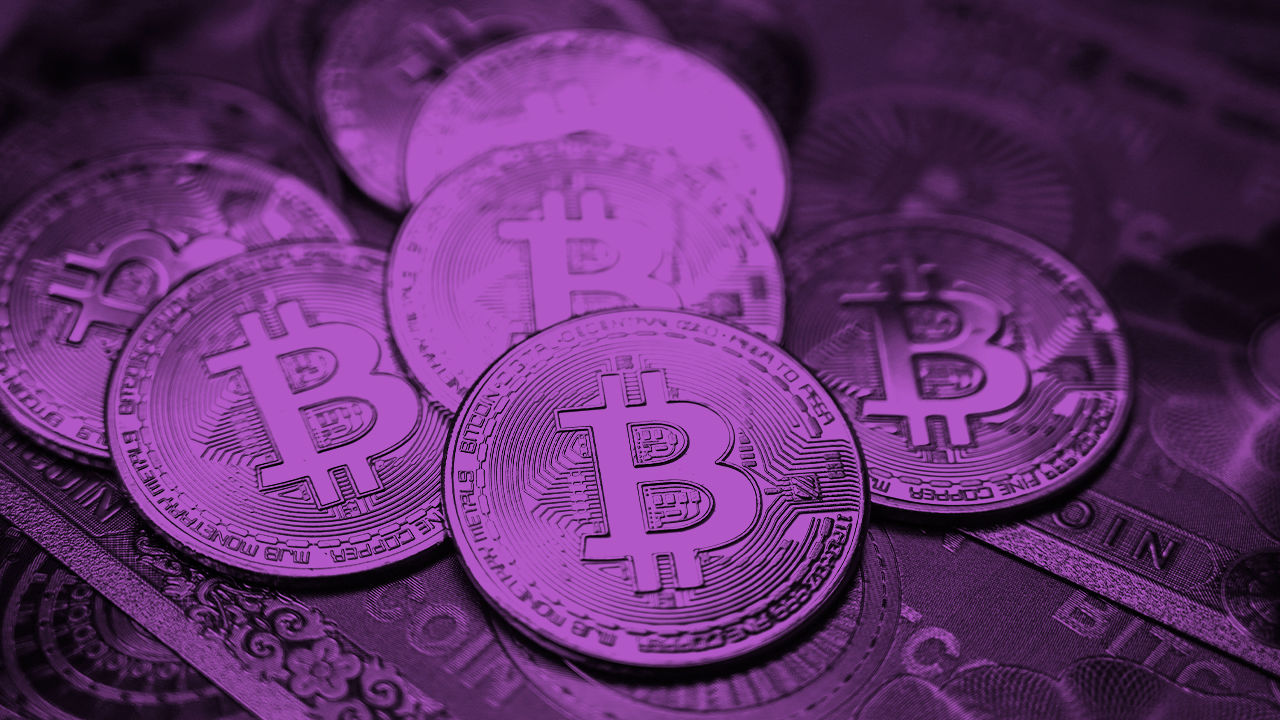Importance of Digital Currency
Digital currency, also known as cryptocurrency, has emerged as a game-changer in the world of finance and commerce. It has revolutionized the way we conduct financial transactions and has gained immense importance. Here are some key reasons why digital currency is becoming increasingly significant:
1. Efficiency and Speed: Digital currency transactions are processed instantly, eliminating the need for intermediaries like banks. This ensures speedy and efficient transactions, especially for cross-border payments. Additionally, digital currency allows for automated smart contracts, streamlining business processes and reducing administrative burdens.
2. Global Reach: Unlike traditional fiat currencies, digital currency can be accessed and used globally, without the need for currency exchange or dealing with cross-border regulations. This opens up new opportunities for businesses, enabling seamless international transactions and reducing the cost of doing business globally.
3. Lower Transaction Fees: Digital currency transactions generally involve lower fees compared to traditional banking systems. This makes it more cost-effective for individuals and businesses to send and receive money, especially for remittances and micro-payments, where traditional banking fees can eat into the value being transferred.
4. Financial Inclusion: Digital currency has the potential to bring financial services to the unbanked and underbanked populations around the world. With a smartphone and internet access, individuals in remote areas can easily access and use digital currency, improving financial inclusion and empowering individuals to participate in the global economy.
5. Protection Against Inflation and Financial Crises: Some digital currencies, such as Bitcoin, are designed to have a limited supply, ensuring protection against inflation. This is particularly relevant in countries with unstable economies or experiencing hyperinflation. Digital currencies can provide a store of value and a hedge against traditional fiat currencies during times of economic uncertainty.
6. Technological Advancements: Digital currencies are built on blockchain technology, which offers transparency, immutability, and security. The underlying technology has the potential to revolutionize various industries beyond finance, such as supply chain management, healthcare, and voting systems, creating more efficient and secure processes.
In summary, the importance of digital currency cannot be understated. It provides efficiency, global accessibility, lower transaction fees, financial inclusion, protection against inflation, and technological advancements. As the world becomes increasingly interconnected, the adoption and acceptance of digital currency will continue to grow, shaping the future of finance and commerce.
Lack of Regulation
One of the major issues surrounding digital currency is the lack of proper regulation. Unlike traditional financial systems that adhere to stringent regulatory frameworks, the relatively new and evolving nature of digital currencies has created a regulatory gap. Here are the key issues resulting from the lack of regulation:
1. Market Volatility: The absence of regulatory oversight has contributed to extreme price volatility in the digital currency market. Without proper regulations in place, markets are susceptible to manipulation, scams, and fraudulent activities, leading to significant price fluctuations and potential financial risks for investors.
2. Investor Protection: The lack of regulatory oversight exposes investors to potential risks and scams. Unlike traditional financial systems where investor protection measures are in place, such as deposit insurance and regulatory agencies, the decentralized and unregulated nature of digital currencies leaves investors vulnerable to fraud, hacking, and Ponzi schemes.
3. Consumer Rights: In the absence of strict regulations, consumers lack safeguards and legal protections when dealing with digital currency transactions. Issues such as fraud, dispute resolution, and unauthorized transactions pose challenges for consumers, as there are limited avenues for recourse or legal action.
4. Money Laundering and Illicit Activities: The lack of regulation creates an environment that is conducive to money laundering, terrorist financing, and other illegal activities. Digital currencies offer a certain level of anonymity and privacy, making them an attractive tool for criminals. The absence of robust regulations hampers efforts to combat illicit activities effectively.
5. Systemic Risk: The lack of regulation in digital currencies poses a potential systemic risk to the global financial system. In the event of a market crash or widespread fraud, the impact could extend beyond the digital currency space and have broader implications for financial stability.
6. International Coordination: The absence of global regulatory coordination makes it challenging to address digital currency-related issues on a global scale. With different jurisdictions having varying regulations or no regulations at all, achieving consistency and cooperation becomes difficult, impeding efforts to tackle cross-border challenges.
It is important to note that while the lack of regulation poses challenges, regulating digital currencies also presents complex issues. Striking the right balance between oversight and innovation is crucial. Governments and regulatory bodies are actively exploring ways to address these concerns while fostering innovation and maintaining financial stability in the digital currency ecosystem.
Security Concerns
Security is a critical concern when it comes to digital currencies. While blockchain technology offers inherent security features, there are still significant security issues that need to be addressed. Here are some of the key security concerns related to digital currencies:
1. Hacking and Cyberattacks: Digital currency platforms and wallets are attractive targets for hackers due to the potential financial gains. Cyberattacks can result in the theft of digital assets or compromise personal information. Instances of high-profile exchange hacks and wallet breaches have highlighted the vulnerability of digital currency systems.
2. Phishing and Social Engineering: Scammers often use phishing techniques to trick users into revealing their private keys or login credentials. Social engineering attacks, such as impersonating customer support, can also lead to the loss of funds. The decentralized nature of digital currencies makes it challenging to recover stolen funds or identify the perpetrators.
3. Malware and Ransomware: Malicious software and ransomware pose significant threats to digital currency users. Malware can compromise the security of wallets, allowing hackers to gain unauthorized access to funds. Ransomware attacks encrypt user data and demand payment in digital currencies, exploiting the anonymity and irreversibility of transactions.
4. Smart Contract Vulnerabilities: Smart contracts, used in various blockchain platforms, are susceptible to coding errors and vulnerabilities. Exploiting these vulnerabilities can lead to the loss of funds or other malicious activities. The immutability of blockchain also means that once a smart contract is deployed, it cannot be easily altered or fixed.
5. Centralized Points of Failure: Some digital currency platforms operate under a centralized model, where a single entity controls user funds and transactions. This concentration of power creates a single point of failure, as any security breach or malicious activities within the platform can have severe ramifications for users’ funds.
6. Regulatory Compliance: Security concerns also extend to regulatory compliance. Digital currency exchanges and businesses need to implement robust security measures to ensure compliance with anti-money laundering (AML) and know-your-customer (KYC) regulations. Failure to do so can result in legal implications and reputational damage.
Addressing these security concerns requires a multi-faceted approach. It involves implementing strong authentication mechanisms, educating users about best practices, conducting regular security audits, and investing in robust security infrastructure. Collaboration between industry stakeholders, regulatory bodies, and cybersecurity experts is essential to foster a secure digital currency ecosystem that inspires user confidence.
Privacy Issues
Privacy is a fundamental aspect of financial transactions, and digital currencies present both advantages and challenges in this regard. While digital currencies offer certain privacy advantages, there are also significant privacy concerns that need to be addressed. Here are some key privacy issues related to digital currencies:
1. Pseudonymity: Digital currencies provide a level of pseudonymity, as transactions are recorded on a public blockchain with user addresses rather than personal information. However, this pseudonymity can be compromised if there is a connection between a user’s digital currency address and their real-world identity, such as through exchange registrations or wallet providers.
2. Blockchain Analysis: While digital currency transactions are recorded on a public blockchain, the transparency of blockchain can result in the disclosure of sensitive information. Sophisticated data analysis techniques can be used to trace and link transactions, potentially compromising user privacy and revealing transaction patterns and balances.
3. Surveillance and Monitoring: Governments and regulatory bodies have shown increasing interest in monitoring digital currency transactions, particularly for anti-money laundering (AML) and counter-terrorism financing (CTF) purposes. This surveillance can infringe upon the privacy of individuals, as transactions and account balances can be tracked and monitored.
4. Data Breaches: Digital currency platforms and wallets store sensitive user data, including transaction histories and wallet addresses. In the event of a data breach, this information can be exposed and potentially used for malicious purposes, compromising user privacy.
5. Address Reuse: Reusing digital currency addresses undermines privacy. When an address is reused, it becomes easier to link multiple transactions to the same user, creating a trail of transaction history. To enhance privacy, it is recommended to use new addresses for each transaction.
6. Regulatory Compliance: Privacy concerns also intersect with regulatory compliance requirements. Regulatory bodies often require digital currency platforms to implement measures for know-your-customer (KYC) and anti-money laundering (AML) compliance. While these measures are vital for preventing illicit activities, they can intrude upon user privacy if not implemented thoughtfully.
Resolving privacy issues in digital currencies is a complex task that requires a delicate balance between individual privacy rights and regulatory requirements. Solutions such as privacy-enhancing technologies and encryption techniques are being developed to provide users with greater control over their personal information. Additionally, regulatory frameworks that strike a balance between privacy protection and the prevention of illicit activities are essential for safeguarding user privacy in the digital currency ecosystem.
Volatility
Volatility is a significant concern when it comes to digital currencies. Unlike traditional fiat currencies, which are generally backed by governments and central banks, digital currencies are subject to extreme price fluctuations. Here are some key factors contributing to the volatility of digital currencies:
1. Limited Adoption: Digital currencies are still in the early stages of adoption, resulting in relatively low liquidity and market participation. With fewer participants, even minor buy or sell orders can have a significant impact on price movements, contributing to volatility.
2. Speculation and Investor Sentiment: The speculative nature of digital currencies attracts investors looking for quick profit. News, market sentiment, and speculation can greatly influence digital currency prices, leading to rapid price swings and heightened volatility.
3. Lack of Regulation: The absence of comprehensive regulations in the digital currency space creates an environment where market manipulation and fraudulent activities can occur. This lack of oversight contributes to price irregularities and increased volatility.
4. Market Manipulation: Instances of market manipulation, such as pump-and-dump schemes, have been observed in the digital currency market. These schemes involve artificially inflating the price of a digital currency and then selling it off, causing a sharp decline in price. Such manipulative activities contribute to market volatility.
5. Technological Factors: Technical issues and vulnerabilities in digital currency platforms can also contribute to volatility. Security breaches, software bugs, and network congestion can disrupt trading and create uncertainty, leading to price fluctuations.
6. Macro Factors: Digital currencies are not immune to broader economic and geopolitical factors. News events, regulatory announcements, economic indicators, and global market trends can impact digital currency prices, leading to increased volatility.
It is important to note that while volatility can be seen as a risk, it can also present opportunities for traders and investors who can accurately navigate and take advantage of price fluctuations. However, for mainstream adoption and stability, efforts are being made to develop mechanisms to mitigate volatility, such as stablecoins that are pegged to stable assets or the development of decentralized finance (DeFi) platforms that aim to provide stability through smart contract mechanisms.
Furthermore, as digital currencies become more widely adopted and regulatory frameworks are put in place, it is expected that volatility will gradually decrease. Increased institutional participation, improved market liquidity, and greater transparency will contribute to a more stable and mature digital currency market over time.
Use in Illegal Activities
The use of digital currencies in illicit activities has been a concern since their inception. While digital currencies offer certain advantages, such as transactional privacy and borderless transfers, they can also be exploited for illegal purposes. Here are the key issues related to the use of digital currencies in illegal activities:
1. Money Laundering: Digital currencies can be used to launder money, obscuring the source of funds and making it challenging for authorities to track illicit proceeds. The pseudonymous nature of digital currency transactions and the ability to transfer funds globally with relative ease make it attractive to money launderers.
2. Terrorist Financing: Digital currencies can potentially be used for terrorist financing, as they provide a means to transfer funds anonymously and across borders. The decentralized and borderless nature of digital currencies poses challenges for authorities in detecting and preventing such activities.
3. Dark Web and Illegal Marketplaces: Digital currencies have facilitated the growth of dark web marketplaces, where illegal goods and services are bought and sold. The privacy afforded by digital currencies allows users to operate on these platforms without revealing their identities, making it difficult for law enforcement agencies to trace and apprehend perpetrators.
4. Ransomware Attacks: Digital currencies, with their pseudonymous and irreversible transactions, have become the preferred method of payment for ransomware attacks. Perpetrators encrypt victims’ data and demand payment in digital currencies, exploiting the anonymity and irreversibility to extort funds.
5. Cybercrime: Digital currencies are sometimes utilized in cybercrime activities, such as hacking, fraud, and identity theft. Criminals can demand ransom payments in digital currencies or use them to monetize stolen data or credentials.
Addressing the use of digital currencies in illegal activities requires a collaborative effort between governments, regulatory bodies, and the digital currency industry. Some initiatives include:
– Regulatory Compliance: Implementing robust anti-money laundering (AML) and know-your-customer (KYC) measures in digital currency platforms to enhance traceability and deter illicit activities.
– Law Enforcement Cooperation: Enhancing cooperation and information sharing between law enforcement agencies globally to combat digital currency-related crimes and apprehend perpetrators.
– Education and Awareness: Educating users about the risks associated with digital currencies and promoting responsible use to deter involvement in illegal activities.
– Technological Solutions: Developing and promoting technologies that enhance transaction monitoring and detect suspicious activities in digital currency networks.
While digital currencies have been associated with illegal activities, it is essential to recognize that the vast majority of digital currency users are law-abiding individuals and businesses. Striking the right balance between regulatory oversight, privacy protection, and fostering innovation is crucial in ensuring that digital currencies are used responsibly and contribute positively to the global economy.
Energy Consumption
The energy consumption associated with digital currencies, particularly those that rely on proof-of-work consensus mechanisms like Bitcoin, has garnered significant attention. The energy consumption concerns surrounding digital currency mining are as follows:
1. Proof-of-Work Algorithm: Digital currencies that utilize a proof-of-work algorithm require miners to solve complex mathematical problems to validate transactions and add them to the blockchain. This process requires substantial computational power, resulting in high energy consumption.
2. Electricity Usage: Digital currency mining operations consume vast amounts of electricity. As mining becomes more competitive and the difficulty level increases, miners require more powerful hardware, resulting in further energy consumption. The energy-intensive nature of mining has raised concerns about its environmental impact.
3. Carbon Footprint: The heavy reliance on fossil fuels for electricity generation in many regions means that digital currency mining operations contribute to carbon emissions and exacerbate climate change. The carbon footprint associated with mining activities can be substantial, especially in areas where energy sources are not renewable or low-carbon.
4. Energy Inefficiency: Mining processes often involve high energy consumption, but only a fraction of that energy is utilized for transaction validation. The energy inefficiency of mining raises questions about the sustainability of digital currencies and their impact on the overall energy grid.
5. Renewable Energy Integration: Some initiatives aim to address energy consumption concerns by encouraging the use of renewable energy sources for digital currency mining. By harnessing clean energy, the environmental impact of mining operations can be reduced, making digital currencies more sustainable in the long run.
6. Alternative Consensus Mechanisms: An exploration of alternative consensus mechanisms, such as proof-of-stake or delegated proof-of-stake, is ongoing. These mechanisms require significantly less energy compared to proof-of-work, potentially reducing the energy footprint of digital currencies.
Efforts are being made to find innovative solutions to mitigate the energy consumption of digital currencies. These include the development of more energy-efficient mining hardware, the adoption of renewable energy sources for mining operations, and the exploration of alternative consensus algorithms.
It is essential to consider the overall energy consumption of the financial and banking sectors and compare it to that of digital currencies. While digital currencies may have higher energy consumption at present, they also offer the potential for more efficient and inclusive financial systems, where energy consumption can be offset by gains in efficiency and reduced reliance on traditional banking infrastructure.
Accessibility and Inclusion
One of the key benefits of digital currencies is their potential to promote financial accessibility and inclusion, particularly for individuals who have limited access to traditional financial services. Here are the notable aspects related to accessibility and inclusion in the context of digital currencies:
1. Banking the Unbanked: Digital currencies have the potential to provide financial services to the unbanked and underbanked populations around the world. With a smartphone and internet access, individuals who lack access to traditional banking infrastructure can participate in the global economy and access basic financial services.
2. Low Barrier to Entry: Digital currencies typically have low barriers to entry, allowing individuals to create wallets and start transacting with minimal requirements. This accessibility enables people with limited financial resources to participate in the digital currency ecosystem and potentially benefit from its advantages.
3. Reduced Cost of Transactions: Traditional banking transactions, especially for cross-border transfers, can be expensive due to fees and currency exchange costs. Digital currencies offer the potential for faster, cheaper, and more accessible cross-border transactions, reducing the financial burden for individuals and businesses.
4. Global Financial Inclusion: Digital currencies transcend geographical boundaries, allowing individuals in remote and underserved areas to access financial services. This global inclusiveness enables individuals to participate in international trade, remittances, and other economic activities, fostering economic growth and reducing income disparities.
5. Microtransactions and Remittances: Digital currencies enable microtransactions, allowing for the transfer of small amounts of value with minimal fees. This facilitates lower-cost remittance services, benefiting individuals who heavily rely on remittances from abroad to support their families and communities.
6. Financial Sovereignty: Digital currencies offer individuals greater control over their finances and assets. With ownership of private keys, individuals have the ability to manage and secure their digital assets independently, without relying on intermediaries.
Efforts are being made to further enhance accessibility and inclusion in the digital currency ecosystem. Initiatives like mobile wallets and user-friendly interfaces aim to simplify the user experience, making digital currency adoption more accessible to a broader range of users. Additionally, education and awareness campaigns help individuals understand the benefits, risks, and responsible use of digital currencies.
While digital currencies have the potential to promote financial accessibility and inclusion, it is important to address the digital divide and ensure that individuals from all socioeconomic backgrounds have equal opportunities to access and utilize digital currencies. Collaborative efforts between governments, organizations, and technology providers can help bridge this gap and empower individuals globally.
Centralization vs Decentralization
The centralization versus decentralization debate is fundamental to the digital currency ecosystem. Digital currencies can be designed to operate either centrally or in a decentralized manner. Here are the main aspects to consider when examining centralization and decentralization in the context of digital currencies:
1. Control and Governance: Centralized digital currencies are typically controlled by a single entity, such as a central bank or a company. Decentralized digital currencies, on the other hand, operate on a distributed network where control is shared among network participants. Centralization allows for efficient decision-making and quick implementation of changes, but it also concentrates power in the hands of a few. In contrast, decentralization promotes transparency and removes the need for a central authority, but it can lead to slower decision-making processes and coordination challenges.
2. Security: Centralized digital currencies rely on a central authority to secure transactions and protect user funds. Decentralized digital currencies, on the other hand, leverage cryptographic algorithms and consensus mechanisms to ensure security without relying on a central authority. While centralization offers a sense of security through established systems and oversight, it also poses a single point of failure. Decentralization, on the other hand, offers increased resilience and security through its distributed nature and the use of cryptographic techniques.
3. Transparency and Privacy: Centralized digital currencies can provide varying degrees of privacy depending on the policies and regulations in place. Decentralized digital currencies often provide stronger privacy through the use of pseudonyms and encrypted transactions. However, the transparent nature of public blockchains used by decentralized digital currencies can still allow for transaction analysis and identification of patterns, raising concerns about privacy.
4. Scalability and Performance: Centralized digital currencies generally offer better scalability and performance due to their ability to optimize systems and infrastructure. Decentralized digital currencies can face challenges in achieving high throughput, consensus among network participants, and handling transaction volumes efficiently. However, ongoing developments and innovations, such as layer 2 solutions, aim to address scalability concerns in decentralized digital currencies.
5. Trust and Intermediaries: Centralized digital currencies rely on trust in the central entity controlling the currency. Users must trust the central authority to safeguard their funds and maintain the integrity of the system. Decentralized digital currencies aim to minimize the need for trust in intermediaries by leveraging consensus algorithms and cryptographic techniques. Trust is placed in the mathematical protocols and the consensus of the network participants instead of a central entity.
The centralization versus decentralization debate continues to shape the evolution of digital currencies. It is important to recognize that different use cases may require different degrees of centralization or decentralization. Striking a balance between efficiency, security, privacy, and user empowerment through decentralization is crucial in enabling digital currencies to reach their full potential.
Scalability Challenges
Scalability is a significant challenge in the context of digital currencies. As the popularity and usage of digital currencies increase, there is a need to ensure that the underlying technology can handle a growing number of transactions efficiently. Here are the main scalability challenges faced by digital currencies:
1. Transaction Processing Speed: Digital currencies rely on blockchain technology to validate and record transactions. However, the current transaction processing speed is often limited, resulting in slower confirmation times and higher network congestion during peak usage periods. This scalability challenge hampers the ability of digital currencies to handle a large volume of transactions promptly.
2. Blockchain Size and Storage: As the number of transactions recorded on the blockchain grows, the size of the blockchain also increases. This poses storage challenges for network participants, particularly for those with limited resources or bandwidth. The larger the blockchain, the greater the storage requirements, potentially limiting participation and increasing centralization risks.
3. Consensus Mechanisms: Different digital currencies employ different consensus mechanisms to ensure agreement on transaction validity. Some consensus mechanisms, such as proof-of-work, require significant computational power, leading to longer confirmation times and higher energy consumption as network usage grows. The scalability limitations of certain consensus mechanisms impede the ability of digital currencies to process transactions at a larger scale.
4. Network Bandwidth: The capacity of the network to handle a large volume of transactions is influenced by network bandwidth limitations. Increasing transactional activity can strain the network’s bandwidth, slowing down transaction processing and potentially resulting in higher fees for users.
5. Interoperability: Digital currencies operate on separate and often incompatible blockchain networks, which limits their interoperability. This lack of interoperability inhibits the seamless transfer of value between different digital currencies and hampers scalability by fragmenting the ecosystem.
6. User Experience: As digital currencies strive to reach mainstream adoption, it is crucial to provide a user-friendly experience. Complex wallets, lengthy confirmation times, and high fees can deter users from participating, impeding the scalability and growth of digital currencies.
To address scalability challenges, various solutions and innovations are being explored. These include:
– Layer 2 Solutions: Implementing layer 2 solutions, such as payment channels and sidechains, to offload transaction volume from the main blockchain and enable faster and more cost-effective transactions.
– Blockchain Sharding: Implementing sharding techniques to partition the blockchain into smaller subsets, allowing for parallel processing and increasing transaction throughput.
– Consensus Algorithm Improvements: Researching and developing new consensus mechanisms that are more efficient and scalable, such as proof-of-stake or delegated proof-of-stake.
– Interoperability Protocols: Standardizing interoperability protocols to enable seamless value transfer between different digital currency networks, promoting scalability and enhancing user experience.
Scalability is a crucial factor for the widespread adoption of digital currencies. Continued research, technological advancements, and collaborative efforts within the digital currency community will pave the way for scalable solutions that can handle the increasing demand for efficient and widespread transaction processing.

























